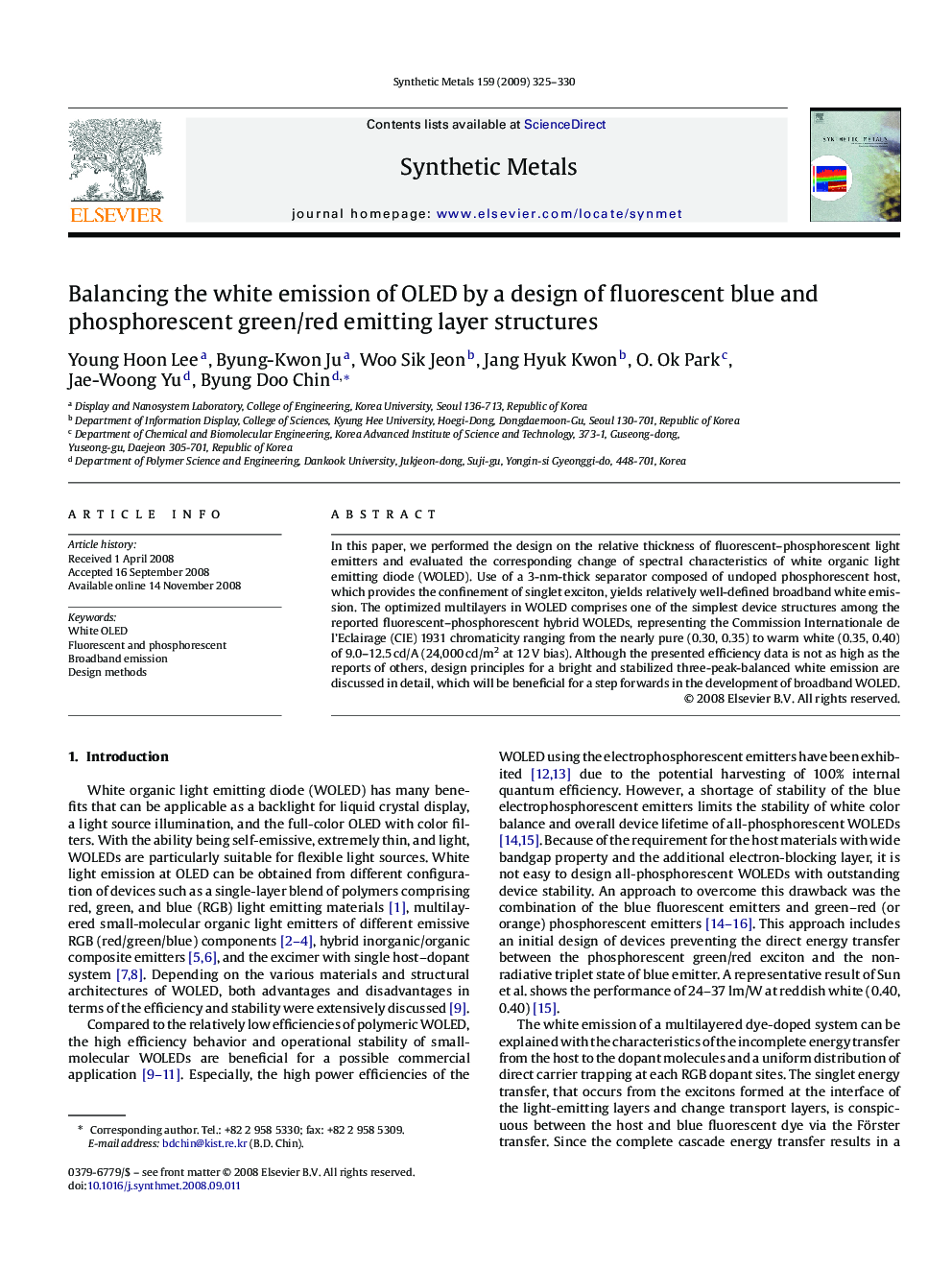| Article ID | Journal | Published Year | Pages | File Type |
|---|---|---|---|---|
| 1443627 | Synthetic Metals | 2009 | 6 Pages |
In this paper, we performed the design on the relative thickness of fluorescent–phosphorescent light emitters and evaluated the corresponding change of spectral characteristics of white organic light emitting diode (WOLED). Use of a 3-nm-thick separator composed of undoped phosphorescent host, which provides the confinement of singlet exciton, yields relatively well-defined broadband white emission. The optimized multilayers in WOLED comprises one of the simplest device structures among the reported fluorescent–phosphorescent hybrid WOLEDs, representing the Commission Internationale de l’Eclairage (CIE) 1931 chromaticity ranging from the nearly pure (0.30, 0.35) to warm white (0.35, 0.40) of 9.0–12.5 cd/A (24,000 cd/m2 at 12 V bias). Although the presented efficiency data is not as high as the reports of others, design principles for a bright and stabilized three-peak-balanced white emission are discussed in detail, which will be beneficial for a step forwards in the development of broadband WOLED.
